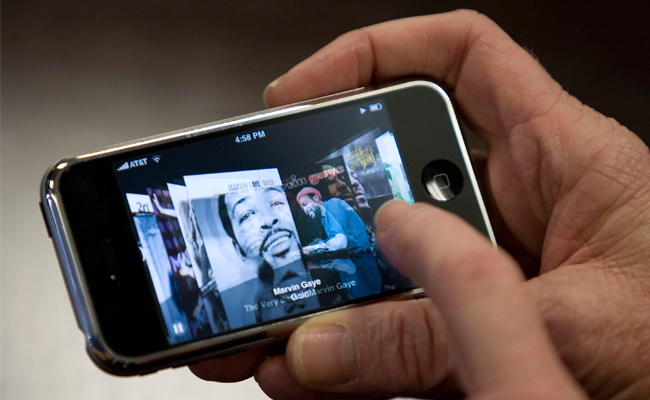
Today brings the announcement of the new iPhone, now in its eighth generation. The product was first launched in June 2007. In January that year, Steve Jobs’ initial proclamation was that Apple had reinvented the phone, stating, “It’s amazing how hard it is to make calls on phones. We want you to use contacts like never before.”
Granted, the first iPhone was rather limited by today’s standards. The iTunes Online Store wouldn’t launch for several months (and even then was limited to Wi-Fi), the App Store was a year away, and streaming video apps would take even longer to arrive. Regardless, it had an interface and design that set the standard for all smartphones to come.
While the early reviews were generally positive, its shortcomings were readily discussed, causing some to be almost dismissive of the device, considering it cost $499 for a 4 GB model, or $599 for an 8 GB model. Others advised eager consumers to wait for improvements to these early, often frustrating, limitations. Here are a handful of reviews that examined the good, and the not-so-good aspects of Apple’s very first “Jesus Phone.”
The New York Times put it rather succinctly, explaining that the iPhone lived up to “most” of the hype surrounding it.
“The iPhone is revolutionary; it’s flawed. It’s substance; it’s style. It does things no phone has ever done before; it lacks features found even on the most basic phones.”
It went on to specify that one of the most conspicuous features it lacked was the absence of a MMS, meaning no images could be sent, unless you were doing it via email. Additionally, its lowly 2 megapixel camera and inability to shoot video were also pointed out, especially when compared to other, much cheaper phones that were available at the time.
They did, however, offer an instructional video explaining how to do basic functions like wake, unlock, and make phone calls on the iPhone. For being all of eight years old, it seems particularly dated, especially considering that these actions are all second nature now.
Gizmodo, while generally seeming to praise the iPhone, was also quick to point out the importance of waiting to buy one. Citing the usual complaints, they advised waiting for a software update, saying it was “based on a trust that Apple will do what’s right for us, not just what’s convenient.”
TechRadar gave it a 4 out of 5 stars overall, citing the simple and elegant design as its primary appeal.
What the iPhone does right, it does outstandingly, so much so that it will lead you to overlook its considerable shortcomings. The iPhone 3.5-inch screen dazzles.
They were rather specific addressing those shortcomings, including the non-inclusion of Adobe Flash, which is now well-documented, but was a new and confusing omission at the time.
… load a site that requires plug-ins such as Adobe Flash, and you see missing plug-in messages. Apple won’t comment on why the iPhone’s Safari browser is crippled this way, but perhaps AT&T’s EDGE network isn’t fast enough for streaming media. The iPhone’s Bluetooth can be used only with a phone headset and can’t be used to transfer files, sync, or listen to the iPod via Bluetooth earphones.
CNET originally rated the phone an 8.0, but lowered the score to a 7.6 the following year with the release of the iPhone 3G, which improved on many of the first generation’s shortcomings.
[The] iPhone is a lovely device with a sleek interface, top-notch music and video features, and innovative design touches. But a host of missing features, a dependency on a sluggish EDGE network, and variable call quality — it is a phone after all — left us wanting more.
PC World echoed the New York Times review in its mix of both innovation and lack of basic features. Though they really didn’t like the touchscreen keyboard, stating a BlackBerry was easier to use when it came to typing.
“There’s plenty to love, and plenty to lament. The iPhone offers a solid design and a beautiful, touch-sensitive 480-by-320-pixel screen you can control with multiple taps or pinches of your fingers. The iPhone displays an on-screen keyboard that you can toggle between QWERTY text keys and numbers/symbols. It’s still no match for the hardware keyboard you get on a BlackBerry or Treo, but it certainly beats any standard cellphone keypad.”
Time was rather direct in its praise, saying it was “the best phone that anybody has ever made,” before going on to sing its very specific praises, the email, the Web browsing, and the integration of Google Maps. Though, the lack of GPS was mentioned in passing as something that “would be nice.”
Of course, Steve Ballmer, the then-CEO of Microsoft, was not impressed, and while he acknowledged the fact it had sold well, was incredibly dismissive of it overall.
Ultimately, the first-generation iPhone sold 6.1 million units in its first five quarters alone, with stores reporting shortages within hours of its initial launch. As lines wrapped around the block that day, and continue to do so year after year, it’s clear that Apple had hit a home run and redefined what consumers’ expectations about what a cellphone could do, even in light of what it couldn’t do, at least initially.






